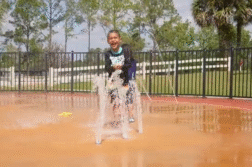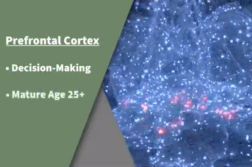NASHVILLE, Tenn. (Ivanhoe Newswire) – Ketamine is a powerful medication, used as a sedative since the 1970’s. But it’s seldom been used with traumatic brain injuries in children, because for years, it was thought to raise intracranial pressure inside the skull. However, new research shows ketamine might actually help kids heal.
A few years ago, Will Terry was riding a scooter on vacation, when he toppled over head first.
“He was trying to slow down and brake, and when he did, he went over the handlebars and hit his head,” his mother, Catherine Terry, explains to Ivanhoe.
Within 30 minutes, he was throwing up.
Catherine says, “I went to get the car, and daddy started carrying Will down to the car, and he lost consciousness.”
Will had suffered a traumatic brain injury and had surgery in Florida before being flown to Monroe Carell Jr. Children’s Hospital at Vanderbilt.
“Right after his accident, he was in a coma, essentially, a month and on a ventilator for a very long time,” Catherine adds.
Traumatic brain injuries hospitalize 50 to 60,000 children every year, but can ketamine be the answer to treating these kids? In a study, children from one month to 16 years of age were given ketamine post-brain injury.
Critical care medicine doctor at Monroe Carell Jr. Children’s Hospital at Vanderbilt, Dr. Michael Wolf, MD says, “In patients who received ketamine, their intracranial pressure – the pressure in their heads – went down.”
And that was critical for Will to have time to heal. He’s 12 now and taught himself sign language to communicate.
“He is still making tremendous progress. Every day, he’s getting better and stronger and more independent. And so, really, the sky is the limit,” Catherine says about her son.
Eighteen doses of ketamine were administered during actual intracranial crises. In the study, overall, researchers observed a lessening of that pressure. Because the findings represent a shift in thinking that ketamine raises intercranial pressure, Dr. Wolf will continue with a larger study.
Contributors to this news report include: Donna Parker, Producer; Roque Correa, Videographer & Editor.
To receive a free weekly e-mail on medical breakthroughs from Ivanhoe, sign up at: http://www.ivanhoe.com/ftk
Sources:
https://pubmed.ncbi.nlm.nih.gov/36825892/
MEDICAL BREAKTHROUGHS
RESEARCH SUMMARY
TOPIC: KETAMINE TO HEAL KIDS’ BRAINS?
REPORT: MB #5267
BACKGROUND: A traumatic brain injury (TBI) typically occurs after a brutal hit to the head or body. If a foreign object pierces through brain tissue, such as a bullet, this can cause TBI as well. The severity of the traumatic brain injury determines which signs are typically noticed in an individual. For mild TBI, symptoms such as headache, vomiting, problems with speech, sensory issues, and trouble sleeping usually present themselves. For moderate to severe TBI, symptoms such as long-lasting headaches, seizures, persistent confusion, and slurred speech are common. Since young children can’t always communicate certain symptoms, watch for prolonged crying, changes in sleep pattern, and disengagement. Ketamine is an anesthetic that produces hallucinations in the user. While taking the drug, the individual is placed under an intense state of amnesia and alleviation from pain. Ketamine has been approved for use in humans and animals for the treatment of resistant depression.
(Sources:
https://www.mayoclinic.org/diseases-conditions/traumatic-brain-injury/symptoms-causes/syc-20378557
https://www.dea.gov/factsheets/ketamine)
DIAGNOSING: The first step in diagnosing an injury to the brain is conducting a medical exam. This is normally in the form of a neurological exam and evaluates motor mobility, sensory use, reflexes, and hand/eye coordination. Medical devices such as CT scans and MRI scans can be used to eliminate significant brain injuries but should never be used solely to diagnose a TBI. The opinion of a medical professional trained to appropriately diagnose and treat traumatic brain injuries is necessary in every case. Incorrectly diagnosing a TBI can prolong the healing process and potentially permit further damage to the wound site. Ketamine has been quite controversial over the years due to the ways in which some have chosen to use it. It’s known as “special K” on the streets, and it’s incredibly dangerous when taken irresponsibly. However, researchers are working to debunk the long-standing disdain for the drug in association with TBIs. In a study of 33 children (aged one month to 16 years) with severe TBIs, after being administered Ketamine, their intracranial pressure decreased. This is a great feat as the standard procedure for relieving brain pressure in young people is surgery – which can be extremely risky and lead to permanent injury. This study helped propel the conversation of ketamine and intracranial pressure forward – as it’s been at a halt for decades.
(Sources:
NEW TECHNOLOGY: The University of Georgia has implemented new research that is hopeful in advancing the prognosis of TBIs. This technology uses bio-manufactured exosomes to carry messages to the brain and help lessen inflammation in the body. This treatment can be could theoretically administered at the time of injury via intravenous fluids to accelerate neuronal regeneration and support cells after injury. “Administrating exosomes into a patient’s IV drip would always be preferable to invasive brain surgery,” said aid Lohitash Karumbaiah, associate professor of regenerative medicine in UGA’s College of Agricultural and Environmental Sciences. “What we can do is give physicians a fighting chance to regulate the inflammatory response of TBI, rather than trying to treat it after it occurs.”
(Source:
https://www.biospace.com/article/new-technology-could-help-treat-traumatic-brain-injury/)
FOR MORE INFORMATION ON THIS REPORT, PLEASE CONTACT:
Craig Boerner
If this story or any other Ivanhoe story has impacted your life or prompted you or someone you know to seek or change treatments, please let us know by contacting Marjorie Bekaert Thomas at mthomas@ivanhoe.com




